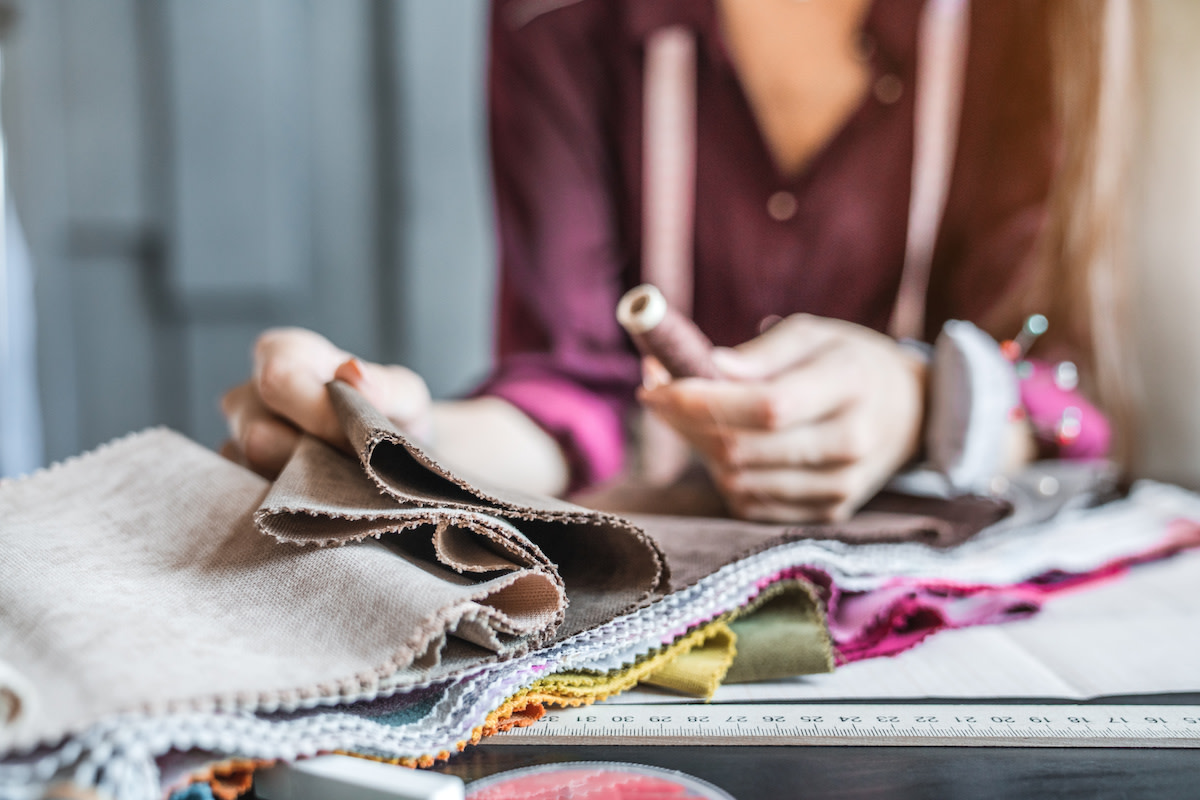Smocking Fabric: How to Smock a Garment at Home
Written by MasterClass
Last updated: Mar 22, 2022 • 3 min read
Smocking adds hand-embroidered flair to a garment. Learn the basics of how to create your own beautiful smocking patterns.
Learn From the Best
What Is Smocking?
Smocking is an embroidery technique that relies on decorative stitching between pleats to create textural patterns. Historically, smocking lent garments (like bodices or blouses) elasticity around necklines and cuffs before the invention of rubber. It’s now more common to see smocking used as a decorative element for items like girls’ dresses or baptism gowns.
Unlike shirring, which uses elastic thread to shrink a piece of fabric, smocking involves thread that is stiff, not stretchy.
7 Types of Smocking Stitches
The smocking stitch you choose will depend on the size of the pattern you want to create (i.e., small stitches for smaller patterns and larger stitches for larger patterns) and how comfortable you are with needlework. Simpler patterns are the best starting point for beginners. Here are seven essential stitches, from basic to complicated:
- 1. Outline stitch: The outline stitch (also known as a stem stitch) comprises overlapping diagonal stitches running in the same direction. It is often the first row of stitches applied to a garment to hold the pleats in place.
- 2. Wheat stitch: A step up from the outline stitch, the wheat stitch resembles a stalk of wheat since it’s essentially two outline stitches running underneath each other with the diagonal seams alternating up and down.
- 3. Cable stitch: One of the easier stitches, a cable stitch involves placing the thread above and below the needle to create a row of stitches with an interlocking cable pattern.
- 4. Wave stitch: A wave stitch joins two parallel stitches with diagonal stitching alternating between the two. This V-shaped stitch is often the last stitch in a smocked garment because it reduces tension and lets the pleats out.
- 5. Trellis stitch: A trellis stitch is two intersecting wave stitches that create an X pattern.
- 6. Diamond stitch: Much as it sounds, a diamond stitch results from two rows of triangular stitching that together form a diamond pattern.
- 7. Honeycomb stitch: Unlike some of the other embroidery stitches listed, a honeycomb stitch creates a pattern from the pleating itself, securing together different parts to result in a honeycomb pattern of folds.
What Materials You’ll Need for Smocking
Despite being time-intensive, hand-smocking doesn’t require many materials. Here’s what you’ll need:
- Crewel needles: This type of needle features a longer eye than a standard sewing needle. Depending on your project, you’ll want a crewel needle (also known as an embroidery needle) between sizes five and eight.
- Fabric: You can smock with almost any fabric, but lighter, softer materials will be easier to work with. Beginners might also choose gingham fabric since the checkered pattern creates a built-in guide for stitching.
- Thread: Smocking requires a thicker thread known as embroidery floss. Your thread material should match your fabric material (i.e., silk thread for a silk garment). Choose thread colors that complement the color of the fabric you’re using.
How to Smock a Garment
Smocking can be a meditative process once you get into the swing of it. Learn how to smock a garment using this step-by-step tutorial:
- 1. Gather and prepare your materials. Since you’ll be pleating the fabric, use a piece of prewashed fabric three times the length you’ll ultimately need.
- 2. Pleat your fabric. Use a pleater if you have access to one. Otherwise, use a smocking transfer to place a grid on the garment’s underside (the “wrong side” of the fabric), or hand-measure smocking dots in even rows on the fabric. Next, use gathering threads or floss to create a simple running stitch along your smocking dots, pull your pleats tight, and knot the gathering thread.
- 3. Mark your center valley. Identifying the center of your pleats will make it easier to add decorative elements later on.
- 4. Begin stitching. Keeping your needle horizontal at all times, begin stitching the first pleat by pulling your needle up through the valley from underneath. Continue along the row to the next pleat, maintaining even spacing. If you are right-handed, work left to right; do the opposite if you are left-handed.
- 5. Repeat for remaining rows. Once your pleating is firmly in place, add any additional embellishments or decoration to the center of the fabric.
- 6. Remove the gathering stitches. It’s essential to keep your gathering stitch separate from your smocking stitches; the gathering stitches are just guides rather than a part of the pattern.
Want to Learn More About Fashion Design?
Become a better fashion designer with the MasterClass Annual Membership. Gain access to exclusive video lessons taught by the world’s best, including Laura Kim and Fernando Garcia, Diane von Furstenberg, Marc Jacobs, Tan France, Anna Wintour, and more.
